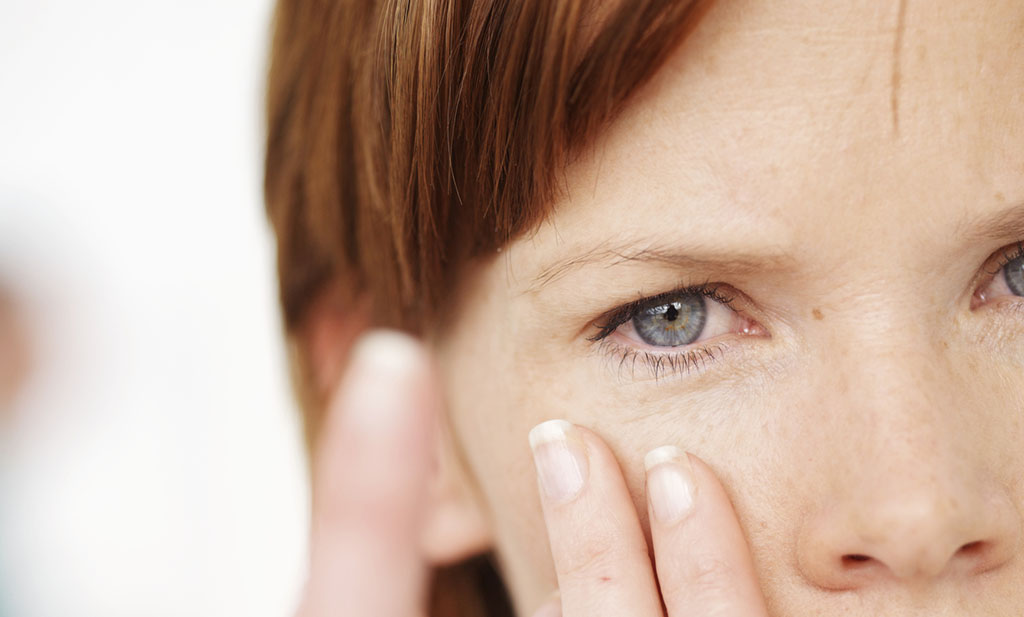
What Is Macular Degeneration?
Dry macular degeneration is a chronic eye disease that causes vision loss in the center of your field of vision. Dry macular degeneration is marked by deterioration of the macula which is in the center of the retina. The layer of tissue on the inside back wall of your eyeball.
Dry macular degeneration is one of two types of age-related macular degeneration. The other type — wet macular degeneration — is characterized by blood vessels that grow under the retina in the back of the eye, leaking blood and fluid. Dry macular degeneration is the more common form of the disease.
Dry macular degeneration may worsen your quality of life by causing blurred central vision or a blind spot in your central vision. You need clear central vision for many tasks, such as reading, driving and recognizing faces.
Symptoms
Dry macular degeneration symptoms usually develop gradually. You may notice these vision changes:
- The need for brighter light when reading or doing close work
- Increasing difficulty adapting to low light levels, such as when entering a dimly lit restaurant
- Increasing blurriness of printed words
- A decrease in the intensity or brightness of colors
- Difficulty recognizing faces
- A gradual increase in the haziness of your central or overall vision
- Crooked central vision
- A blurred or blind spot in the center of your field of vision
- Hallucinations of geometric shapes or people, in case of advanced macular degeneration
Dry macular degeneration may affect one or both eyes. If only one eye is affected, you may not notice any changes in your vision because your good eye may compensate for the weak eye.
See your eye doctor if:
- You notice changes in your central vision
- Your ability to see colors and fine detail becomes impaired
These changes may be the first indication of macular degeneration, particularly if you’re older than age 50.
The exact cause of dry macular degeneration is unknown, but the condition develops as the eye ages. Dry macular degeneration affects the macula — an area located at the center of your retina that is responsible for clear vision in your direct line of sight. Over time tissue in your macula may thin and break down.
Factors that may increase your risk of macular degeneration include:
- Age. Your risk of macular degeneration increases as you age, especially after age 50. Macular degeneration is most common in people older than 65.
- Family history of macular degeneration. If someone in your family had macular degeneration, you’re more likely to develop the condition.
- Race. Macular degeneration is more common in whites (Caucasians) than it is in other races.
- Smoking. Smoking cigarettes increases your risk of macular degeneration.
- Obesity. Being severely overweight increases the chance that early or intermediate macular degeneration will progress to the more severe form of the disease.
- Unhealthy diet. A poor diet that includes few fruits and vegetables may increase the risk of macular degeneration.
- Cardiovascular disease. If you have had diseases that affected your heart and blood vessels (cardiovascular disease), you may be at higher risk of macular degeneration.
- Elevated cholesterol. Elevated cholesterol may be associated with a higher risk of macular degeneration.
COMPLICATIONS
Progression to wet macular degeneration
At any time, dry macular degeneration can progress to wet macular degeneration, which causes rapid vision loss. Doctors can’t predict whether you’ll develop wet macular degeneration.
Some people with dry macular degeneration may experience severe vision loss.
TESTS AND DIAGNOSIS
Doctors will review your medical history and family history, and conduct a comprehensive eye exam to diagnose your condition. Doctors may conduct several tests to diagnose dry macular degeneration, including:
- Examination of the back of your eye. Your eye doctor will examine the back of your eye to look for a mottled appearance that’s caused by drusen — yellow deposits that form under the retina in people with macular degeneration. Your eye doctor will put drops in your eyes to dilate your eyes and use a special instrument to examine the back of your eye.
- Test for defects in the center of your vision. During an eye examination, your eye doctor may use an Amsler grid to test for defects in the center of your vision. You may have macular degeneration if some of the straight lines in the grid look faded, broken or distorted.
- Fluorescein angiogram. During an angiogram of your eye, your doctor injects a colored dye into a vein in your arm. The dye travels to and highlights the blood vessels in your eye.
A special camera takes several pictures of the blood vessels in your eye as the dye travels through the blood vessels. The images will show if you have abnormal blood vessel or retinal abnormalities in your eye, such as those associated with wet macular degeneration.
- Optical coherence tomography (OCT). This noninvasive imaging test displays detailed cross-sectional images of the retina. The test identifies areas of retina thinning, thickening or swelling. These are caused by fluid accumulations from leaking blood vessels in and under your retina. In addition to its value in an initial evaluation, OCT is also often used to help monitor the response of the retina to macular degeneration treatments.
Determining the stage of your dry macular degeneration
Dry macular degeneration is categorized in three stages based on the progression of damage in your eye:
- Early stage. In early macular degeneration, doctors may detect several small drusen or a few medium-sized drusen under the retina in one or both eyes. Generally, you won’t experience any vision loss in the earliest stage.
- Intermediate stage. In intermediate macular degeneration, doctors detect a large number of medium-sized drusen or one or more large drusen in one or both eyes. At this stage, you may not have symptoms. However, you may notice your central vision is blurred, or you may need extra light for reading or doing detail work or it may take you longer to recover your vision when entering a room that is not well illuminated.
- Advanced stage. In advanced macular degeneration, doctors detect several large drusen, as well as extensive breakdown of cells in the macula. You may have a well-defined area of blurring in your central vision, which may gradually grow larger.
TREATMENT
Treatment can’t reverse dry macular degeneration. But this doesn’t mean you’ll eventually lose all of your sight. Dry macular degeneration usually progresses slowly, and many people with the condition can live relatively normal, productive lives, especially if only one eye is affected. Your doctor may recommend annual eye exams to see if your condition is progressing.
Increased vitamin intake
Taking a high-dose formulation of antioxidant vitamins and zinc may reduce the progression of dry macular degeneration to vision loss, according to research by the National Eye Institute (NEI). In its research, the NEI used a formulation that included:
- 500 milligrams (mg) of vitamin C
- 400 international units (IU) of vitamin E
- 15 mg of beta carotene (often as vitamin A — up to 25,000 IU)
- 80 mg of zinc (as zinc oxide)
- 2 mg of copper (as cupric oxide)
- Lutein and Zeaxanthine
Ask your doctor whether this formulation may help you reduce your risk of vision loss. Studies found this specific combination of vitamins can’t cure severe vision loss, but it may reduce the risk of vision loss in people with intermediate macular degeneration.
If you have advanced stage macular degeneration in one eye, this combination of vitamins may reduce the risk that you’ll develop vision loss in your other eye. But for people with early-stage dry macular degeneration, there’s no evidence that these vitamins provide a benefit.
Some vitamin supplements may have complications and risks. Tell your doctor if you smoke or have smoked in the past, because beta carotene supplements have been associated with a higher risk of lung cancer in smokers. Beta carotene also may increase the risk of coronary artery disease. Also, high doses of vitamin E may increase the risk of heart failure and other complications.
